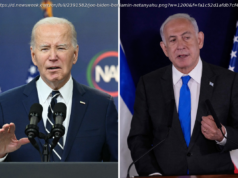Anthony Bourdain changed the way we see the world. It’s the sort of hyperbolic, cliché obituary line that Bourdain, who was found dead in an…
Anthony Bourdain changed the way we see the world. It’s the sort of hyperbolic, cliché obituary line that Bourdain, who was found dead in an apparent suicide on Friday morning, likely would have detested, but it’s true.
Bourdain, who graduated from the Culinary Institute of America in Hyde Park, N.Y., and worked at Les Halles in Kips Bay, was by most accounts an unremarkable talent in the kitchen. But he had an immense gift for writing about food, and sharing his enthusiasm for it.
In his first book, 2000’s “Kitchen Confidential,” he revealed the rough, drug-fueled exploits of fine dining chefs, painting a vivid portrait of the restaurant world unknown to many outside the industry.
But it was with his travel shows, “No Reservations” and “ Parts Unknown,” that Bourdain had his widest impact.
Those programs changed the way people ate and travelled — along with the livelihoods of those selling the cheap eats he was so fond of.
With him as your weary, eloquent, inebriated, Lipitor-popping guide, the world wasn’t so much your oyster, as it was a fleshy bone to be picked clean and cracked open for the rich marrow. A food stall in Flushing selling Chinese lamb burgers that he visited in a 2007 “No Reservations” episode was as much of a quintessential culinary experience as dinner at Per Se. (That food stall, X’ian Famous Foods, is now a local empire, with nine locations in Manhattan, one in Brooklyn and two in Queens.)
In Bourdain’s world, flavor was more important than fussiness and fanciness. Six-dollar noodles and beer was a meal suitable for a president — in 2016, he took Barack Obama to a tiny spot in Hanoi, Vietnam, for exactly that.
He championed organ meats, tough flavorful cuts cooked for hours, and cheap, filling starches — what he called “poor food.” In doing so, he changed attitudes about food, and helped bring chef favorites previously seen as exotic or undesirable on to mainstream menus. Uni and offal now seem commonplace, as do food trucks on every corner, but before Bourdain, they weren’t. While pre-Bourdain, lean cuts such as filet mignon were seen as prime; now they’re passe.
In his most memorable travels, food didn’t just satisfy an appetite or cure a hangover: it was a vehicle of empathy and understanding that was as interesting — often more so — as seeing a major landmark or museum.
Sure, he might have sampled such local specialties as warthog anus in Namibia, but his aim wasn’t really to highlight the exotic, but to seek and find, again and again, that everyone, no matter where, just wanted a good meal.
The Bourdain effect could be a bit much. Many of those food trucks serve mediocre fare despite it being prepared in a vehicle. And if you trek out to an off-the-beaten-path kebab joint in Istanbul or the rustic seafood spot in Lisbon that he championed, you’ll likely find that many Bourdain fans have already made the trek. There will be signs on the walls about Bourdain, TripAdvisor decals and waiters who speak English. It won’t be quite as charming and pure as it seemed to be when Bourdain went.
But when you bite into the spit-roasted lamb or a piece of crusty bread slathered with crab guts, it will still be very, very delicious.






